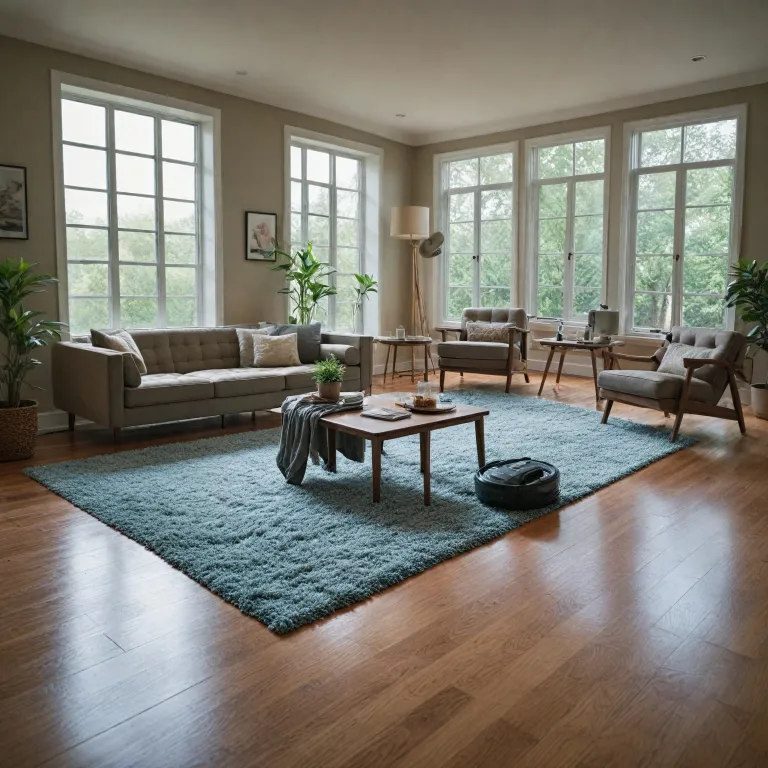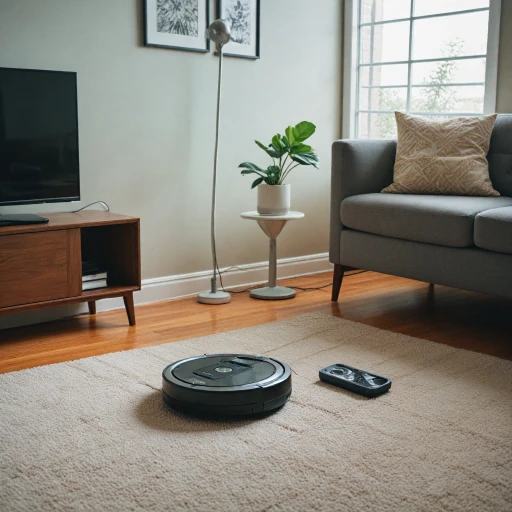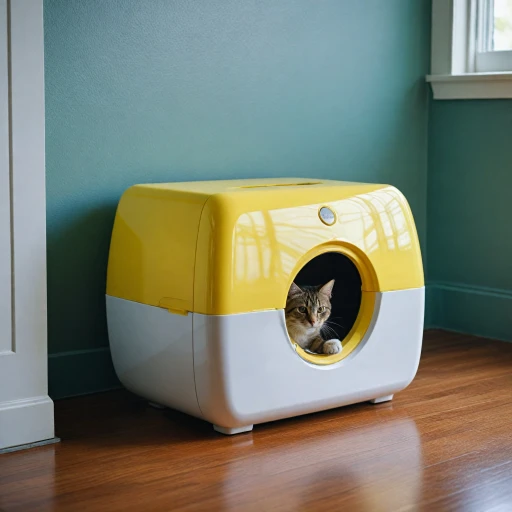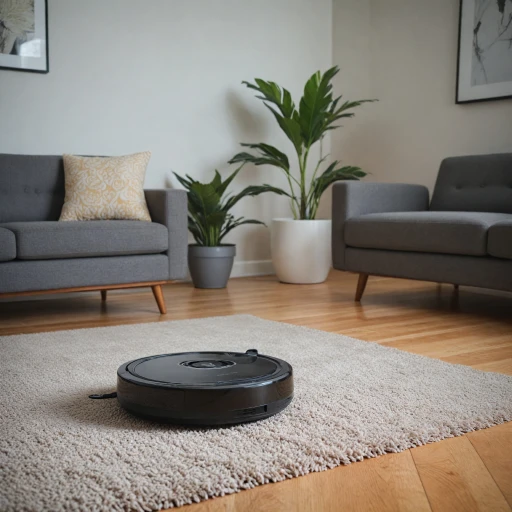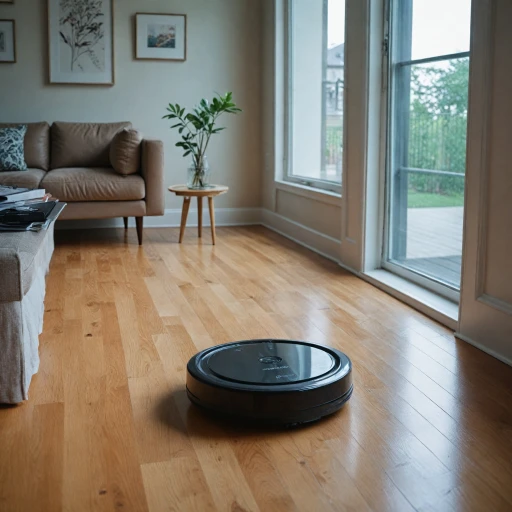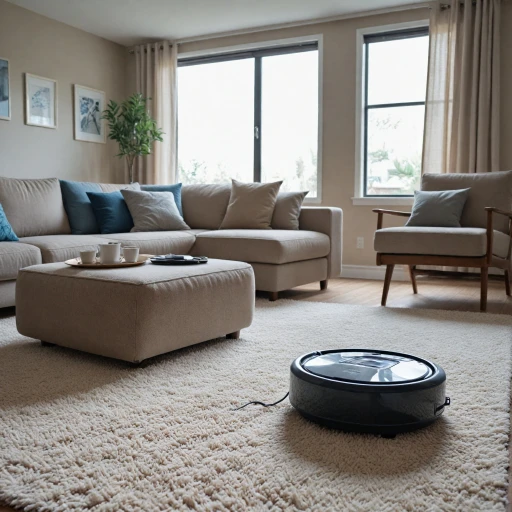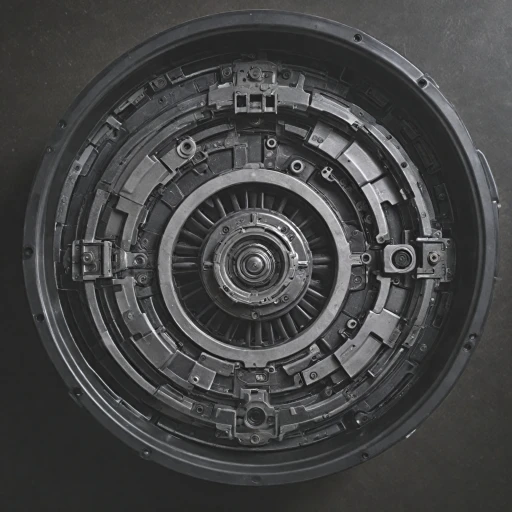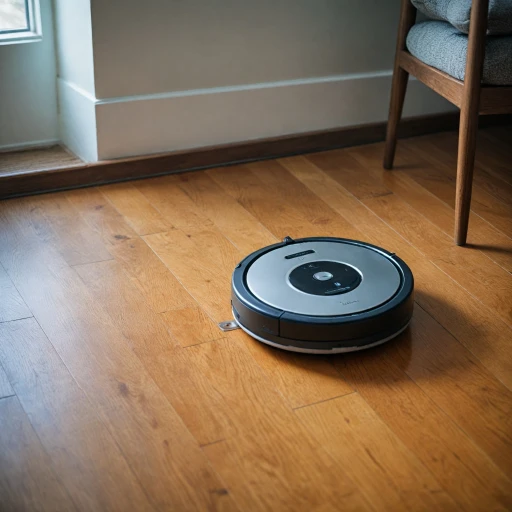
Understanding the needs of hardwood floors
Why Hardwood Floors Need Special Attention
Hardwood floors are a popular choice for many homes due to their classic look and durability. However, keeping hardwood floors clean requires more than just a quick sweep. Unlike tile floors or carpets, wood floors can be sensitive to water, harsh cleaning solutions, and abrasive cleaning machines. The right approach helps maintain the finish and prevents long-term damage.
Understanding the Challenges of Cleaning Hardwood
Hardwood flooring can show dirt, dust, and pet hair more easily than some other types of hard floors. Water is another concern—too much moisture from a mop or steam cleaner can seep into the wood, causing warping or staining. Using the wrong floor cleaner or a machine not designed for hardwood can leave behind dirty water or even scratch the surface.
- Moisture control: Excess water or steam can damage hardwood floors. Always use a vacuum mop or floor cleaner with a well-controlled water tank and avoid leaving floors wet.
- Gentle cleaning: Choose cleaner machines with soft brushes or pads to avoid scratching. Some models are designed specifically for hard floors and hardwood floors.
- Right cleaning solution: Not all cleaning solutions are safe for wood. Use only those recommended for hardwood to keep floors clean without dulling the finish.
Matching Machines to Your Hardwood Needs
There are many types of cleaning machines and cleaners available, from cordless vacuums to advanced robot vacuum mop combos. The best solution for hardwood floors is one that balances effective dirt removal with gentle care. Some models offer separate clean water and dirty water tanks for mopping, which helps keep floors clean without spreading dirt around. Others combine vacuuming and mopping for a more thorough clean.
When choosing a robot vacuum or floor cleaner, consider the specific needs of your hardwood floors. For a detailed guide on selecting the right machine, check out this resource on choosing the ideal robot vacuum for hardwood floors.
Key features to look for in a robot vacuum
Essential Functions for Hardwood Floor Cleaning
When choosing a robot vacuum for hardwood floors, it’s important to focus on features that protect your flooring while keeping it spotless. Hardwood is sensitive to scratches, water, and harsh cleaning solutions, so not every machine is suitable. Here’s what to look for in cleaner machines designed for hard floors:
- Soft, Non-Abrasive Brushes: Hard bristles or aggressive rollers can damage wood floors. Opt for models with gentle, rubberized brushes or microfiber pads that lift dirt without scratching.
- Adjustable Suction Power: Hardwood floors don’t need the same suction as carpets. Machines with variable suction settings help avoid scattering dirt and protect delicate surfaces.
- Efficient Filtration: A good filter traps fine dust and allergens, keeping your floors and air clean. HEPA filters are a plus for allergy-sensitive homes.
- Water Management: If you want a vacuum mop combo, check for a separate clean water tank and dirty water tank. This ensures dirty water isn’t spread back onto your floors. Avoid models that leave excess water behind, as standing water can damage wood.
- Smart Navigation: Advanced navigation helps the machine avoid bumping into furniture or missing spots. This is crucial for even cleaning and preventing accidental scratches.
- Dedicated Hardwood Floor Modes: Some cleaners have specific settings for hard floors, adjusting suction, mopping, and movement patterns for optimal results.
- Compatibility with Cleaning Solutions: Only use cleaning solutions recommended by the manufacturer. The wrong solution can dull or stain hardwood floors.
- Low Profile Design: A slim machine can reach under furniture and along edges, where dirt tends to collect on wood floors.
- Battery Life and Cordless Operation: Cordless models offer flexibility, but make sure the battery lasts long enough to clean your entire space in one go.
Comparing Popular Types of Robot Floor Cleaners
| Type | Best For | Water/Mopping Feature | Notes |
|---|---|---|---|
| Vacuum Only | Dry dirt, dust, pet hair | No | Gentle on wood, but won’t handle sticky messes |
| Vacuum Mop Combo | Light mopping, daily cleaning | Yes (water tank) | Look for models with separate clean/dirty water tanks |
| Steam Mop Robots | Tile floors, deep cleaning | Yes (steam) | Not recommended for hardwood floors due to moisture risk |
For more in-depth guidance on selecting the best robot vacuum for hardwood floors, check out this guide to choosing the best robot vacuum for hardwood floors.
Remember, the right machine should keep your floors clean without causing damage. In the next sections, we’ll look at how these machines compare to traditional cleaning methods and how to avoid common mistakes that can harm your hardwood flooring.
Comparing robot vacuums to traditional cleaning methods
Robot Vacuums Versus Traditional Floor Cleaning
When it comes to keeping hardwood floors clean, many people wonder if robot vacuums can truly replace traditional cleaning methods. Each approach has its own strengths and weaknesses, especially when it comes to handling dirt, dust, and spills on hard floors.
- Robot Vacuums: These machines are designed to automate floor cleaning, making them a convenient solution for busy households. Most models use a combination of suction and brushes to collect dirt and debris from hardwood floors. Some advanced types also include a water tank and mopping function, allowing for both vacuuming and mopping in one pass. This can be particularly effective for removing fine dust and light dirt, but may not always tackle sticky or dried-on messes as thoroughly as manual cleaning.
- Traditional Cleaning: Using a broom, mop, or dedicated floor cleaner gives you more control over the cleaning process. For example, a mop and bucket with clean water and the right cleaning solution can handle stubborn stains or spills. Steam cleaners and cordless floor cleaners can also be used for deep cleaning, but they require more effort and time. Traditional methods allow you to target specific dirty spots and ensure that dirty water is replaced with clean water as needed.
Robot vacuums are generally best for daily maintenance, keeping floors clean by picking up dust and light dirt before it builds up. However, for deep cleaning or when dealing with dirty water from spills, traditional cleaning machines or manual mopping may still be necessary. Some robot vacuum mop models offer a hybrid solution, combining vacuuming and mopping for a more thorough clean, but it’s important to check if the water tank is large enough and if the machine can handle both hardwood and tile floors without leaving excess water behind.
Another factor to consider is the type of cleaning solution used. While many robot mops recommend only water or specific cleaning solutions to avoid damaging hardwood floors, traditional mopping allows for more flexibility in choosing floor cleaners. Always make sure the solution is safe for wood floors to prevent damage.
For a deeper look at how cleaning machines have evolved, check out this article on the evolution of the industrial broom in modern cleaning.
Ultimately, the best approach may be a combination of both robot vacuums and traditional cleaning methods. Use your robot vacuum for daily floor cleaning and maintenance, and supplement with manual mopping or steam cleaning when your hardwood floors need a deeper clean or when dealing with tough stains and dirty water.
Common mistakes when using machines on hardwood floors
Overlooking the Right Cleaning Modes
Many robot vacuum models offer multiple cleaning modes, such as vacuum only, mop, or a combination of both. Using the wrong mode for hardwood floors can lead to poor results or even damage. For example, using a steam or water-heavy mop function on hardwood can cause water to seep into seams, risking warping or staining. Always select a cleaning solution and mode designed for hard floors and avoid excessive water.Using Harsh or Incompatible Cleaning Solutions
Not all cleaning solutions are safe for hardwood. Some floor cleaners contain chemicals that can strip the finish or leave a sticky residue. Stick to cleaning solutions recommended by your machine’s manufacturer or those specifically labeled for hardwood floors. Avoid using steam cleaners or strong detergents unless the flooring and the machine are both rated for such use.Neglecting to Empty Dirty Water Tanks
If your robot vacuum mop has a water tank, it’s essential to empty dirty water promptly and refill with clean water before each use. Letting dirty water sit can cause odors and bacteria growth, which may transfer back onto your floors. Regularly check both clean and dirty water tanks to ensure optimal cleaning performance.Letting Dirt and Debris Accumulate
Some users wait until floors look visibly dirty before running their robot vacuum. However, regular cleaning prevents dirt and grit from scratching hardwood surfaces. Cleaner machines work best when floors are maintained consistently, reducing the risk of hard dirt particles causing micro-scratches.Ignoring Maintenance of the Robot Vacuum
Failing to clean brushes, filters, and wheels can lead to poor cleaning results and even damage to both the machine and your hardwood flooring. Dirt buildup on brushes can scratch floors, while clogged filters reduce suction. Make it a habit to inspect and clean your robot vacuum after each use, especially if you have pets or high-traffic areas.- Check for tangled hair or debris in brushes and wheels
- Empty dustbins and water tanks regularly
- Replace filters as recommended by the manufacturer
Using the Wrong Type of Robot Vacuum
Not all robot vacuum cleaners are suitable for hardwood floors. Some models are designed for carpet or tile floors and may have hard bristles or aggressive rollers that can scratch wood floors. Always choose a model labeled as safe for hardwood or hard floors, and avoid using machines intended for other flooring types.Maintenance tips for your robot vacuum and hardwood floors
Keeping Your Robot Vacuum and Hardwood Floors in Top Shape
Regular maintenance is essential for both your robot vacuum and your hardwood floors. Clean machines work better and last longer, while well-cared-for flooring stays beautiful and damage-free. Here are some practical tips to help you get the most out of your investment:- Empty the dustbin and clean the filter often. Hardwood floors collect fine dust and dirt, which can quickly fill up your vacuum’s bin. A full bin or clogged filter reduces suction and cleaning performance. Check and empty the dustbin after every cleaning session, and wash or replace filters as recommended by the manufacturer.
- Wipe sensors and charging contacts. Dirty sensors can cause navigation issues, especially on hard floors. Use a soft, dry cloth to gently clean sensors and charging contacts. Avoid using water directly on these parts.
- Maintain the brushes and wheels. Hair and debris can wrap around brushes and wheels, making it harder for your robot to move and clean. Remove tangled dirt regularly and check for wear. Some models have removable brushes for easier cleaning.
- Care for the water tank and mopping pads. If your robot vacuum mop has a water tank, empty any dirty water after each use. Rinse the tank and let it dry to prevent mold. Wash reusable mopping pads with mild cleaning solutions and let them dry completely before the next use.
- Use the right cleaning solution. Only use cleaning solutions approved by your robot vacuum’s manufacturer. Harsh chemicals can damage the machine and your hardwood flooring. For most hard floors, clean water or a gentle floor cleaner is enough.
- Protect your hardwood floors. Avoid letting dirty water or cleaning solution sit on the floor. After mopping, check for any wet spots and dry them with a soft cloth. This helps prevent water damage and keeps your floors clean and shiny.
| Maintenance Task | Frequency | Why It Matters |
|---|---|---|
| Empty dustbin | After each use | Prevents dirt buildup and keeps suction strong |
| Clean filter | Weekly or as needed | Improves air quality and cleaning power |
| Wipe sensors/contacts | Weekly | Ensures proper navigation on hard floors |
| Wash mopping pads | After each mopping session | Prevents spreading dirt and bacteria |
| Check brushes/wheels | Every few uses | Maintains cleaning efficiency and protects flooring |
By following these simple steps, you help your robot vacuum cleaner deliver the best results on hardwood floors, tile floors, and other hard surfaces. Consistent care also protects your flooring from scratches, water damage, and dirt buildup, keeping your home looking its best.
Protecting your investment: avoiding scratches and damage
Preventing Scratches and Surface Damage
Keeping hardwood floors clean is essential, but it’s just as important to avoid scratches and damage from your cleaning machines. Robot vacuums and vacuum mop models are designed for hard floors, but not all are created equal. Some types of cleaner machines have hard bristles or wheels that can leave marks on sensitive wood floors. Always check that the model you choose is specifically made for hardwood floors and has soft, non-abrasive wheels and brushes.Choosing the Right Cleaning Solution and Water Management
If your robot vacuum includes a mopping function, be cautious with water and cleaning solutions. Too much water can seep into the seams of hardwood flooring, causing warping or staining. Use only the recommended amount of clean water in the water tank, and select cleaning solutions that are safe for wood floors. Never use steam cleaners or harsh chemicals, as these can strip the finish and damage the wood. For best results, opt for floor cleaners labeled as safe for hardwood.Routine Checks to Keep Floors Clean and Safe
Dirty water tanks, clogged mopping pads, or worn brushes can leave dirt and dirty water behind, increasing the risk of scratches. Regularly empty the dirty water tank, clean the mop pads, and inspect the brushes for debris. Keeping your machine in top condition ensures your floors stay clean and protected.- Use only soft, non-abrasive pads and brushes on hardwood floors
- Empty and rinse the water tank after each use to prevent dirty water from being redeposited
- Replace cleaning pads and brushes as recommended by the manufacturer
- Choose cleaning solutions formulated for wood floors
